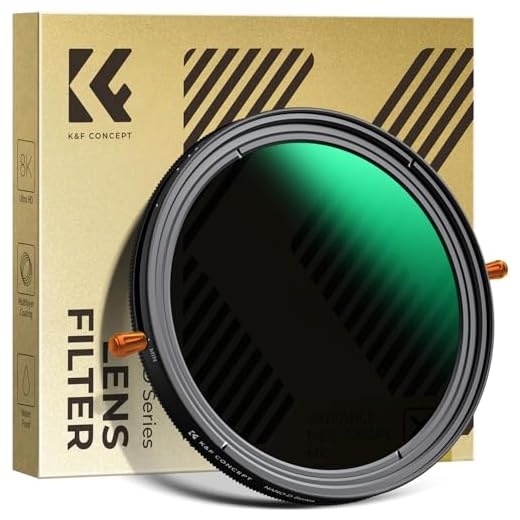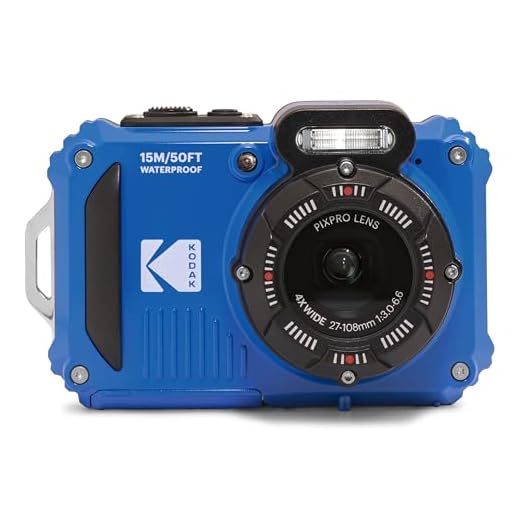




Outdoor photography presents a unique and exciting opportunity to capture the beauty of nature and the world around us. With the advancement of digital cameras, taking stunning outdoor pictures has become more accessible than ever. Whether you’re a beginner or an experienced photographer, mastering the art of outdoor photography with a digital camera can elevate your skills and help you create memorable images.
From capturing breathtaking landscapes to photographing wildlife in their natural habitat, outdoor photography offers a wealth of opportunities to unleash your creativity. However, it also comes with its own set of challenges, such as dealing with varying lighting conditions, unpredictable weather, and the need for careful composition. By understanding the fundamentals of outdoor photography and learning how to make the most of your digital camera, you can overcome these challenges and take your outdoor pictures to the next level.
In this guide, we’ll explore essential tips and techniques to help you take good outdoor pictures with your digital camera. Whether you’re exploring the great outdoors or simply stepping into your backyard, these tips will empower you to capture stunning images that truly showcase the beauty of the world around you.
Tips for Capturing Stunning Outdoor Photos with Your Digital Camera
1. Use Natural Light: When shooting outdoors, take advantage of natural light. Avoid harsh midday sunlight and opt for softer, warmer light in the early morning or late afternoon for more flattering results.
2. Pay Attention to Composition: Look for interesting angles, leading lines, and symmetry in your outdoor shots. Keep the rule of thirds in mind to create visually appealing images.
3. Experiment with Depth of Field: Play around with the aperture settings on your camera to create a shallow depth of field and blur the background, or use a smaller aperture for sharp focus throughout the scene.
4. Capture Movement: To add dynamism to your outdoor photos, try capturing movement, whether it’s flowing water, swaying trees, or a person in motion. Use a slower shutter speed to achieve a sense of motion blur.
5. Include Foreground Interest: Adding a foreground element to your outdoor photos can create depth and draw the viewer into the scene. Look for rocks, flowers, or other objects to frame your composition.
6. Adjust White Balance: Different outdoor settings may require adjustments to the white balance settings on your camera. Experiment with different presets or manually adjust the white balance to ensure accurate colors in your photos.
7. Use a Tripod: For crisp, sharp outdoor photos, especially in low light conditions, use a tripod to stabilize your camera. This will help prevent camera shake and ensure clear, focused images.
Choose the Right Time of Day for Shooting
Avoid shooting during the middle of the day when the sun is high in the sky, as this can create harsh shadows and overexposed images. If you must shoot during these hours, look for shaded areas or use a diffuser to soften the light.
Keep in mind that the weather and season can also affect the quality of your outdoor photos. Overcast days can provide soft, even lighting, while sunny days can create dramatic shadows and highlights. Experiment with different times of day and weather conditions to find the perfect lighting for your outdoor shots.
- Shoot during the “golden hours” for soft, warm light
- Avoid shooting during the middle of the day to prevent harsh shadows
- Experiment with different weather conditions to find the ideal lighting
Use the Rule of Thirds for Composition
One of the key principles of photography is the Rule of Thirds. This rule divides your frame into a grid of nine equal parts using two horizontal and two vertical lines. The most important elements of your photo should be placed along these lines or at their intersections. This technique creates more dynamic and visually appealing compositions compared to placing your subject in the center of the frame.
When shooting outdoor pictures with your digital camera, try to apply the Rule of Thirds by placing your main subject along one of the vertical or horizontal lines. This will help create a sense of balance and interest in your photos. Remember, rules are meant to be broken, so feel free to experiment and see what works best for your specific scene.
Experiment with Different Angles and Perspectives
One way to add interest to your outdoor photos is to experiment with different angles and perspectives. Instead of shooting from eye level, try getting down low or shooting from a higher vantage point. This can give your photos a unique and dynamic look.
Low Angle Shots
Shooting from a low angle can add drama to your outdoor photos. Try getting down on the ground and shooting upwards to capture a different perspective of your subject. This can create a sense of scale and make your subject appear larger and more imposing.
High Angle Shots
On the other hand, shooting from a high angle can give your photos a different feel. Try climbing a tree or standing on a hill to get a bird’s eye view of your subject. This can create a sense of depth and make your subject appear smaller and more isolated.
| Low Angle Shot | High Angle Shot |
 |
 |
Pay Attention to Lighting and Shadows
Golden Hour
During the golden hour, the light is low and creates long, soft shadows that can add depth and dimension to your photos. The warm, golden hue of the light can also enhance the colors in your photos, making them more vibrant and pleasing to the eye. Take advantage of this magical time of day to capture stunning outdoor shots.
| Tips: | 1. Position your subject so that the light is hitting them from the side for a more dramatic effect. |
| 2. Experiment with different angles to see how the light interacts with your subject and the surrounding environment. | |
| 3. Use shadows creatively to add interest and texture to your photos. |
Adjust Your Camera Settings for Outdoor Conditions
When shooting outdoor photos with your digital camera, it’s important to adjust your camera settings to ensure you capture the best possible images. Here are some tips for optimizing your camera settings for outdoor conditions:
- Set your ISO: Choose a lower ISO setting (such as 100 or 200) to reduce noise in your photos and capture more detail in bright outdoor lighting conditions.
- Adjust your aperture: Use a smaller aperture (higher f-stop number) to increase depth of field and keep more of the scene in focus, especially for landscape shots.
- Set the white balance: Choose the appropriate white balance setting for the lighting conditions you’re shooting in, such as daylight or cloudy, to ensure accurate color representation in your photos.
- Use the right shooting mode: Consider using aperture priority or manual mode to have more control over your camera settings and adjust them based on the outdoor lighting conditions.
- Consider using a polarizing filter: A polarizing filter can help reduce glare and reflections in your outdoor photos, especially when shooting landscapes or water scenes.
Include Foreground Elements for Depth
One way to make your outdoor photos more visually interesting is to include foreground elements in your composition. By including objects like trees, rocks, or flowers in the foreground, you can create a sense of depth and dimension in your photos. These foreground elements can help lead the viewer’s eye into the scene and give a sense of scale to the overall image.
When including foreground elements, make sure to position them in a way that enhances the composition rather than distracting from it. Look for interesting shapes or textures that can add visual interest to your photos. Experiment with different angles and perspectives to find the best composition that includes both the foreground elements and the main subject of your photo.
| Tip: | Use a wide aperture (low f-stop) to create a shallow depth of field, which can help blur the background and make the foreground elements stand out even more. |
Edit Your Photos for the Perfect Finish
After capturing stunning outdoor images with your digital camera, the next step is to edit them to enhance their visual appeal. Editing your photos can help you achieve the perfect finish and make them stand out even more. Here are some tips for editing your outdoor photos:
1. Adjust the Exposure
One of the key aspects of editing outdoor photos is adjusting the exposure. You can tweak the brightness, contrast, and highlights to make your images more vibrant and appealing. Pay attention to the overall lighting in the photo and adjust the exposure settings accordingly.
2. Crop and Straighten
Cropping your photos can help remove distracting elements and improve the composition of the image. You can also straighten the horizon line in outdoor photos to ensure a more polished look. Experiment with different cropping techniques to find the best composition for your images.
Tip: Use editing software like Adobe Lightroom or Photoshop to fine-tune your outdoor photos and bring out their full potential.
By following these editing tips, you can enhance the beauty of your outdoor photos and create stunning images that capture the essence of your outdoor adventures.
FAQ
What are some tips for taking good outdoor pictures with a digital camera?
When taking outdoor pictures with a digital camera, it is important to consider the lighting, composition, and framing. Make sure to utilize natural light to your advantage, avoid shooting directly into the sun, and look for interesting angles and perspectives. Additionally, pay attention to the rule of thirds and use leading lines to create depth in your photos.
How can I improve the quality of my outdoor photos with a digital camera?
To improve the quality of your outdoor photos with a digital camera, you can experiment with different camera settings, such as adjusting the aperture, shutter speed, and ISO. It is also helpful to use a tripod to reduce camera shake and ensure sharper images. Furthermore, consider using filters or editing software to enhance the colors and contrast in your photos.
What are some common mistakes to avoid when taking outdoor pictures with a digital camera?
Some common mistakes to avoid when taking outdoor pictures with a digital camera include shooting in harsh midday sunlight, using the wrong white balance settings, and neglecting to clean the camera lens. It is also important to avoid over-editing your photos and to be mindful of distracting elements in the background that could detract from the main subject.
Can you recommend any specific digital cameras for outdoor photography?
There are several digital cameras on the market that are well-suited for outdoor photography, such as the Canon EOS Rebel T7i, Nikon D5600, and Sony Alpha a6000. These cameras offer a range of features, including interchangeable lenses, fast autofocus, and high-resolution sensors, making them ideal for capturing stunning outdoor images. It is recommended to do further research and read reviews to find a camera that best fits your needs and budget.
How can I use natural elements to enhance my outdoor photos with a digital camera?
You can use natural elements, such as water, trees, and mountains, to enhance your outdoor photos with a digital camera. For example, you can incorporate reflections in water to add depth to your composition, use trees or foliage to frame your subject, and include mountains or other landmarks to provide scale and context. Experimenting with different perspectives and angles can help you create more dynamic and visually appealing outdoor images.









